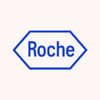
Raltegravir vs. Lopinavir/Ritonavir, Both in Combination With Truvada, in HIV+ Treatment Naive Individuals...
HIV InfectionsThis program is designed to study the efficacy, safety, lipid effects and tolerability of raltegravir compared to lopinavir/ritonavir, in patients with HIV-I infection who have not received prior antiretroviral therapy. All patients will receive concomitant therapy with Truvada.

Raltegravir (Isentress/MK-0518) and HIV-1 Infected CD4 Cells During Acute/Early HIV-1
Human Immunodeficiency VirusThis is an investigator-initiated, two-year, randomized, controlled, single-center, open-label, pilot study comparing 3-drug highly active antiretroviral therapy (HAART) to 3-drug HAART plus raltegravir for persons with acute and early HIV-1 infection. The study will test the hypothesis that use of the integrase inhibitor raltegravir (400 mg BID orally) to inhibit the integration step of the HIV-1 life cycle in conjunction with HAART in subjects with recently acquired HIV-1 infection will decrease the number of HIV-1 infected CD4+ T-cells to a greater extent than a 3-drug HAART regimen.

Switch to Darunavir/r + Maraviroc Quaque Die in Patients With R5 Tropism by Viral DNA Genotyping...
HIV InfectionObjectives of the study: To verify the safety and the efficacy of the study treatment, defined as the persistent control of the virus' replication at 48 weeks after the simplification to maraviroc + darunavir with ritonavir in patients with R5 tropism by viral DNA genotyping. To collect relevant information about the safety, the immunologic and the economic impact of this strategy.

A Study of Fuzeon (Enfuvirtide) With an Integrase Inhibitor Plus Optimized Background in Treatment-Experienced...
HIV InfectionsThis 2-arm study evaluated the efficacy and safety of Fuzeon with an integrase inhibitor in an expanded access program plus an optimized background antiviral regimen (AVR) in HIV-1 infected patients naive to Fuzeon and an integrase inhibitor. In the first cohort phase of the study (Phase I), eligible patients received Fuzeon 90 mg subcutaneously (SC) twice daily until confirmation of response (min/max = 8/16 weeks). In Phase II, the randomised comparator phase of the study, responders were randomized to receive Fuzeon either 90 mg SC twice a day or 180 mg SC once a day for a further 16 weeks. Non-responders and virological failures were terminated from the study. The anticipated time on study treatment was 3-9 months, and the target sample size was 210 individuals.

HIV - Monotherapy in Switzerland (MOST-ch)
HIV InfectionsThe investigators plan to conduct a two arm study, to compare failure rates in the central nervous system (CNS) and genital compartment in virologically fully suppressed patients continuing a highly active antiretroviral therapy (HAART) versus patients switching to ritonavir boosted lopinavir (Kaletra®) HIV-monotherapy. The study is composed of two phases of 48 weeks duration. In addition, neuropsychological tests (Color trial test A 1 and 2; Grooved pegboard; EWIA Digit Symbol form) and evaluation of side effects will be performed.

BOOST: Study of Increased Dosage of Lopinavir/Ritonavir (LPV/r)
HIV InfectionsThis study will look to see if increasing the standard dose of Kaletra is tolerated and if it will lower viral loads to undetectable levels. This study will also look at the pharmacokinetic data (amount of Kaletra in blood at different times).

Safety and Antiviral Activity of TPV in HCV and/or HBV HIV Coinfected Patients TDM Randomised Pilot...
HIV InfectionsThe main purposes of this study are: demonstrate the safety and efficacy of TPV/r among HCV or hepatitis B virus (HBV) co-infected HIV+population, three-class (NRTI, NNRTI, and PI) experienced, with documented resistance to more than one PI. Determine pharmacokinetic data in this co-infected population and potential utility of using therapeutic drug monitoring (TDM) in improving efficacy outcomes.

Optimizing Pediatric HIV-1 Treatment, Nairobi, Kenya
HIV InfectionsGiven the high mortality associated with infant HIV-1 and the fact that surrogate markers are poorly predictive of mortality risk,empiric highly active antiretroviral therapy (HAART) initiation is started in infants younger than 12 months. A problem with this approach is that it obligates infants to life-long therapy, which may be associated with cumulative drug toxicity, poor adherence, and treatment failure. Early HAART for prevention of mortality during the first 2 years of life has potential to salvage immune function and alter viral set-point, allowing withdrawal of therapy, perhaps for several years, until subsequent CD4% decline requires it. This untested approach is attractive because it combines the survival benefits of early pediatric HAART therapy with the benefits of antiretroviral deferral. One hundred and fifty infants who initiated HAART at <13 months of age will be treated with HAART regimen for 24 months after which those who have immune reconstitution and adequate growth (~100) will be randomized to continued versus deferred therapy. Clinical outcomes, growth, and toxicity will be compared in these children to determine if interruption is a safe and beneficial strategy. Follow-up in this studies will be closely monitored by an external Data Safety and Monitoring Board (DSMB).

Pilot Trial of the Effect of Vorinostat and AGS-004 on Persistent HIV-1 Infection
HIV-1 InfectionThe purpose of this research study is to 1) evaluate the safety of a series of injections with the AGS-004 product in combination with a series of Vorinostat doses and 2) to help scientists evaluate ways of reactivating latent (non-acting) HIV virus and determine if the immune system can be made stronger to eliminate the activated HIV virus.

Two Part Study to Evaluate Pharmacokinetics, Safety, and Antiviral Activity of Elvitegravir Administered...
Acquired Immune Deficiency Syndrome (AIDS)HIV InfectionsThe primary objectives of this study are to evaluate the safety, tolerability and steady-state PK and confirm the dose of EVG/r in HIV-1 infected, antiretroviral treatment-experienced children 4 weeks to <18 years of age. The study consists of 2 parts: Part A and Part B. Part A will enroll participants with suppressed viremia (HIV-1 RNA < 50 copies/mL) or failing a current antiretroviral (ARV) regimen (HIV-1 RNA > 1,000 copies/mL only for participants in Cohort 2, Part A) to evaluate the steady state PK and confirm the dose of EVG. Part B will enroll participants who are failing a current ARV regimen (HIV-1 RNA > 1,000 copies/mL) to evaluate the safety, tolerability, and antiviral activity of EVG. The study consists of 4 age cohorts with each cohort including 2 parts (Part A and Part B) with the exception of the adolescent age cohort (Cohort 1: 12 to < 18 years old) containing Part B only.
